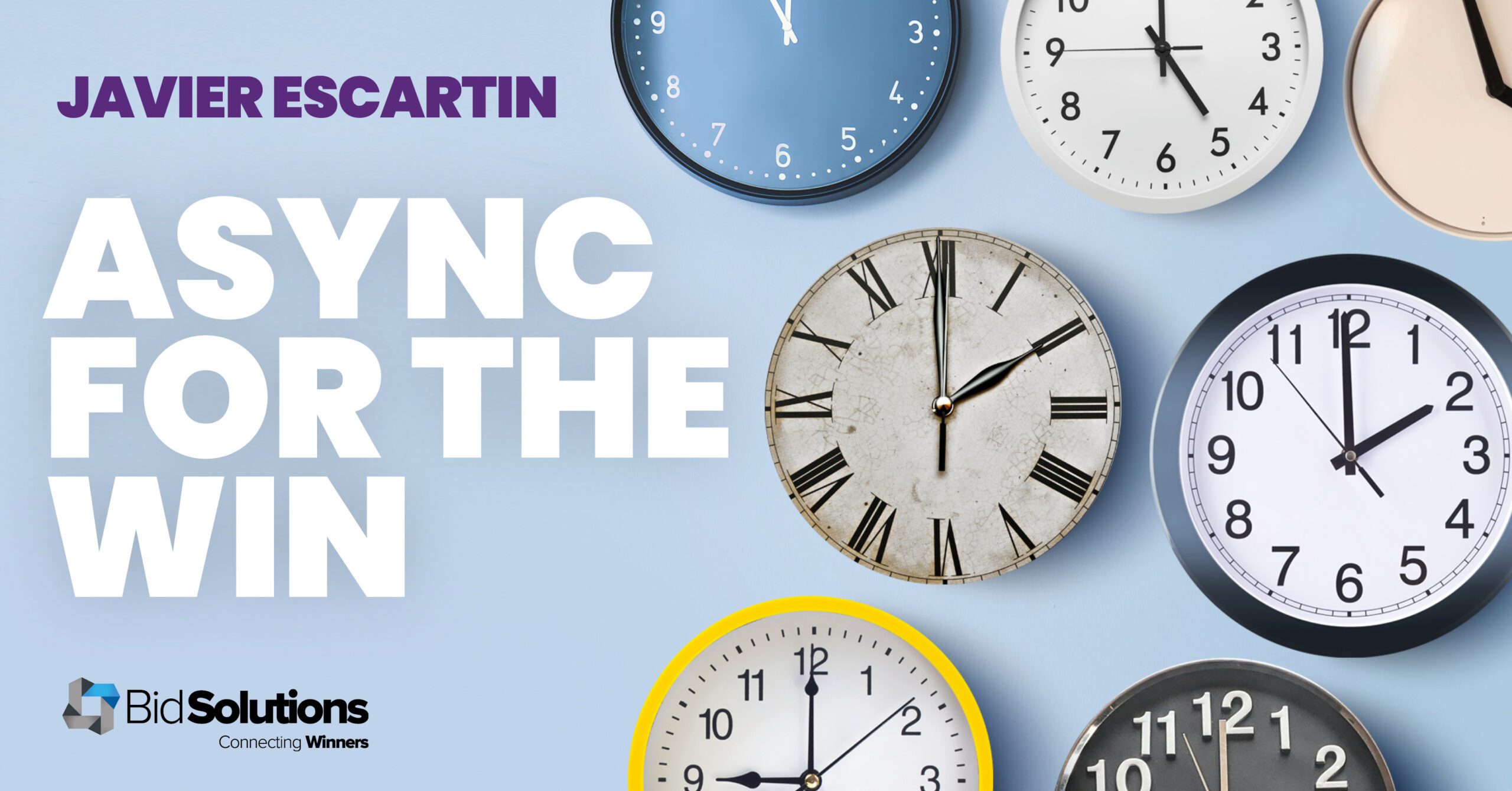
If there’s one thing that has helped me drastically improve Proposal Phase management, it is the implementation of asynchronous processes. Before sharing how I do it, let me share why.
First, management effort is an overhead. The objective of the Proposal Phase is to produce a proposal to win a contract, not to manage one.
Second, all real-time communications, particularly meetings, represent the costliest actions a professional can undertake without approval.
Let’s take meetings, for example. The cost of a meeting is the duration of the meeting X the average hourly cost of the professionals attending X the number of professionals attending. The higher the ranks invited and the longer the meeting, the higher the cost.
And those are only the easy-to-measure costs. Then you have hidden costs such as the opportunity cost of attending, focus disruption cost (huge for technical experts who need big blocks of uninterrupted thinking time), pre/post-meeting actions, morale, etc.
If you do the numbers, you’ll realise meetings are almost always in the hundreds of dollars range (many times in the thousands) per meeting. However, teams are having them as if meetings are free—try to spend that much on tools and training, and let me know what your CFO thinks!
How do you minimise such an expensive overhead? You figure out how to manage proposals as if real-time communications weren’t possible. For some remote teams working across time zones, that’s indeed the case – but even if you have all your team in the same office, imagine you can’t talk, call, or meet. Then, do the following exercise:
- Get a project management app that centralises your bid management. I like to use those that combine different views on top of the same data (table, Kanban, calendar, etc) and have handy functionalities like shared drives, messaging, reminders, status tracking, etc.
- Break down your bid preparation process into steps you can analyse regarding inputs/outputs. Drawing a flow diagram helps a lot.
- Substitute every real-time communication with asynchronous alternatives in the centralised bid management plan of step 1.
After many years of managing proposals this way, I’ve found that almost everything can be an async process. This not only helps reduce costs but also improves traceability and accountability, making managing bids much easier.
There is only one exception. One type of real-time communication I haven’t found a way to do asynchronously is problem-solving (brainstorming). I still recommend having meetings for these, but ensure the problem you’re trying to solve is worth the investment.
Just a closing note: forcing your SMEs to attend a meeting because there’s no other way for you to get their input doesn’t make meetings ‘good’. It’s an expensive tactic we all have used at some point, and it signals a deeper problem than just bid management.
This article was written by Javier Escartin .
Javier is an aerospace engineer who has climbed the corporate ladder from engineering to business development. He is a full-time freelance Proposal Manager and has recently launched a business to make our work easier with artificial intelligence.
He is the founder of DeepRFP.com, runs the proposals newsletter jescartin.com, and manages proposals for worldwide technology companies as a consultant.

